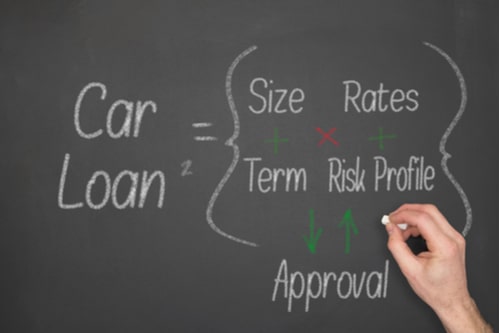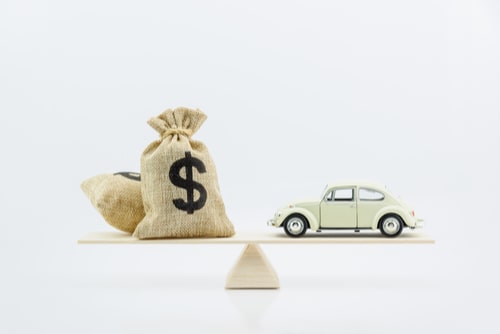
The Ugly Truth About Car Dealers and Car Loans
Shopping for a new car should never begin at the dealership. If you’re a car owner, you probably know this by now. But for those of you who’ve never had the pleasure of dealing with dealership folk, I recommend you take the 3-minutes to read this. Doing so could save you a bundle when it comes time to swap rides.
You might think you already know all there is to know about car salesmen. They’re auto slingers armed with pushy sales tactics and cleverly scripted pitches that make it hard to say “no”. But you’re a tough cookie, right? Nobody’s throwing you into a pricy, brand-new car you can’t afford, right? Think again. Here’s a quick glimpse into the ugly truth about car loans, the dealers that sell them, and how you can save yourself from the splitting ‘buyer’s remorse’ headache.
Shop for the Car Loan, Not the Car
Most people like to find the car they like first, and then take care of all the car loan stuff after. But purchasing a car should start at the loan offer, not the car itself.
When shopping for a car loan, your goal is to find the lowest APR. The APR is the annual percentage rate on the loan principal. In other words, it’s the money that banks and credit unions make from their loan products.
These APRs can range anywhere from 3% to 10%. If this is your first time buying a car and your credit is fair at best, you might end up with an auto loan that has an APR closer to the 10% side of the spectrum, leading to a higher car payment each month. That’s why it’s important to try and get your credit in good standing before you go shopping for an auto loan.
Here are a few tips on how to get a lower rate offer:
- Build your credit: When applying for any loan, the first thing any bank will look at is your credit. Your credit is what tells banks whether or not you’re someone they can trust with their money. If your credit’s on the up and up, so will the loan offers be.
- Shop around: If the first bank turns you down for a loan, don’t get discouraged. Move on to the next one and keep going until you get an offer. Be careful with this strategy though since your credit gets hit with a hard inquiry every time you apply for a loan. To minimize the damage, try starting your search with Lending Tree. Lending Tree is a vastly popular online tool for finding the best loan offers from multiple lenders at the same time.
- Don’t accept the first offer: Never jump the gun on the first offer you get. Chances are, if you were approved for one low rate, there are others available for you to consider. You can always put an offer in your back pocket for now and revisit it later.
- Make a bigger down payment: If your credit isn’t up to par, you could always consider making a larger down payment (if you have the means). Placing a bigger down payment on the car you want will usually lead to lower rate offers from the banks.
- Don’t ask for more than you need: If the car you want has a price tag of $15,000, then ask for $15,000. Asking for more won’t get you anywhere fast if you’re trying to get the lowest available rate. Also, make sure the car you’re buying isn’t the most expensive on the lost. The less you have to borrow, the more likely you could get a approved for a low rate.

Let’s Talk Terms
Now that you’ve been approved for an auto loan, it’s time to talk about the term of that loan. Auto loan terms are generally available at 24, 36, 48, 60, and 84 months. Opting for the longest possible term will ensure the lowest possible monthly payment but will also cost you the most overall. Likewise, shorter terms mean more coming out of your pocket every month, but also means more money saved in the long-run.
You accept an auto loan for $25,000 with a 7-year term and a 6% APR.
- Your monthly payment: $365
- The amount you’ll pay in interest: $5,678
You accept an auto loan for $25,000 with a 2-year term and a 6% APR.
- Your monthly payment: $1,108
- The amount you’ll pay in interest: $1,592
The Principal
The principal on any loan is the initial amount you’re borrowing before interest is added. By now you already know that the longer the car loan term, the more money you’ll pay for the loan. Well, the same rule goes for the loan principal. The more you borrow, the you’re your loan will ultimately cost you. See, your monthly payment is determined like this:
PRINCIPAL X APR / TERM LENGTH = MONTHLY PAYMENT
So, if you’re borrowing a larger amount, both your monthly payment and the overall cost of your loan is going be more. So as previously stated, don’t borrow more than you need to and try to make a sizable down payment if you can.

The “Hidden” Costs
The one thing that most people tend to forget all about when venturing out to buy a new whip is the added cost of insurance! Insurance is generally more for cars that are newer and higher in value. If you’re going to buy new, you better be prepared to pay a higher premium for car insurance. Of course, there are several other factors that go into insurance costs; your age, gender, driving record, and where you reside are all being considered when it comes to the price you pay for auto coverage. Dealers won’t even hand you the keys to your new ride until you’ve added the insurance, so it’s important to be prepared. Speak with your current provider or shop for a new one altogether at CarInsurance.com.
Note: The content provided in this article is only for informational purposes, and you should contact your financial advisor about your specific financial situation.